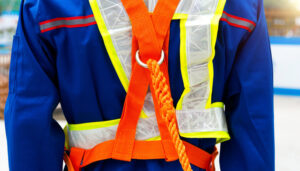Last week my co-pilot and I were climbing through FL310, casually discussing the events of the day, when we were suddenly interrupted by the bright glare of the HYDRAULIC PUMP warning light. As always, I took a deep breath to give myself a few seconds to fully comprehend what the warning light was telling me when I suddenly realized that I was in luck! My co-pilot just happened to also be our company mechanic!! My workload had just been cut in half!
Knowing it wasn’t a full blown emergency (yet), we took our time, completed the abnormal procedure, decided on a suitable diversion airport and made an uneventful landing. Unfortunately, when I’m not flying with my mechanic, THIS is when things normally start to get ugly. THIS is when I usually call the mechanic (or meet him face to face) and answer the inevitable question “So what happened???” And normally, I hem and I haw and I try to remember which light was doing what and which instruments were acting up etc. etc. and the mechanic usually walks away shaking his head as he tries to figure out how he’s going to fix whatever I just tried to explain to him.
Fly First, Explain Later…
You get it, right? When things are going wrong at altitude, our job is to get the aircraft safely on the ground and figure it all out later. Well, let me tell you. Mechanics need details to figure it all out later… They want a full blown documentary of everything that just happened, from the second we noticed an abnormality to the moment we shut down on the ground. There’s no room for “I think” or “it might have been” or “I’m pretty sure it was the left whatchamabob”. Just the facts, ma’am. That’s what they’re looking for.
I was lucky with the hydraulic pump. My mechanic/co-pilot was there with me, checking pressures and doing mechanic things right there at 31,000 feet, as it all unfolded. I didn’t have to remember a thing. But for those times when my flying partner is a mere mortal, I have learned a few tricks to make the mechanic/pilot dance a little smoother…
It Looked Like This…
First, a picture is worth a thousand words. We all have smart phones now and they are always within reach. If you have time, and if safety is not an immediate concern, get some pictures of the issue. Snap pictures of as many clues as you can to help your mechanics unravel the mystery. And if a picture is worth a thousand words, then a video must be worth a thousand more. Again, ONLY if it’s safe and you have time!
Next, if a picture/video is not an option, AFTER you run the checklist, make a plan and keep the airplane flying, try to write down a quick explanation of what’s going on. Be sure to include left or right, what the gauges are indicating, what related systems are doing, which lights are on or off… whatever key factors are involved, write them down, even if you just abbreviate and write it on the back of your hand!
Finally, when you land, talk to your mechanic asap. He or she may have specific wording that they want you to use in a formal write-up. You may inadvertently ground your airplane indefinitely if you write up something in the wrong way. Just remember, the more details you give your mechanic, the easier it will be for him/her to find the root of the problem and get you on your way again.
RELATED CTS TRAINING










